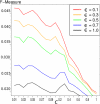Genome-Wide Scale-Free Network Inference for Candida albicans
- PMID: 22355294
- PMCID: PMC3280432
- DOI: 10.3389/fmicb.2012.00051
Genome-Wide Scale-Free Network Inference for Candida albicans
Abstract
Discovery of essential genes in pathogenic organisms is an important step in the development of new medication. Despite a growing number of genome data available, little is known about C. albicans, a major fungal pathogen. Most of the human population carries C. albicans as commensal, but it can cause systemic infection that may lead to the death of the host if the immune system has deteriorated. In many organisms central nodes in the interaction network (hubs) play a crucial role for information and energy transport. Knock-outs of such hubs often lead to lethal phenotypes making them interesting drug targets. To identify these central genes via topological analysis, we inferred gene regulatory networks that are sparse and scale-free. We collected information from various sources to complement the limited expression data available. We utilized a linear regression algorithm to infer genome-wide gene regulatory interaction networks. To evaluate the predictive power of our approach, we used an automated text-mining system that scanned full-text research papers for known interactions. With the help of the compendium of known interactions, we also optimize the influence of the prior knowledge and the sparseness of the model to achieve the best results. We compare the results of our approach with those of other state-of-the-art network inference methods and show that we outperform those methods. Finally we identify a number of hubs in the genome of the fungus and investigate their biological relevance.
Keywords: Candida albicans; LASSO; hubs; linear regression; network inference; prior knowledge; reverse engineering; scale-free.
Figures









Similar articles
-
Data- and knowledge-based modeling of gene regulatory networks: an update.EXCLI J. 2015 Mar 2;14:346-78. doi: 10.17179/excli2015-168. eCollection 2015. EXCLI J. 2015. PMID: 27047314 Free PMC article. Review.
-
An Interspecies Regulatory Network Inferred from Simultaneous RNA-seq of Candida albicans Invading Innate Immune Cells.Front Microbiol. 2012 Mar 12;3:85. doi: 10.3389/fmicb.2012.00085. eCollection 2012. Front Microbiol. 2012. PMID: 22416242 Free PMC article.
-
Integrated inference and evaluation of host-fungi interaction networks.Front Microbiol. 2015 Aug 4;6:764. doi: 10.3389/fmicb.2015.00764. eCollection 2015. Front Microbiol. 2015. PMID: 26300851 Free PMC article.
-
Data-based Reconstruction of Gene Regulatory Networks of Fungal Pathogens.Front Microbiol. 2016 Apr 22;7:570. doi: 10.3389/fmicb.2016.00570. eCollection 2016. Front Microbiol. 2016. PMID: 27148247 Free PMC article.
-
Complement and innate immune evasion strategies of the human pathogenic fungus Candida albicans.Mol Immunol. 2013 Dec 15;56(3):161-9. doi: 10.1016/j.molimm.2013.05.218. Epub 2013 Jun 26. Mol Immunol. 2013. PMID: 23809232 Review.
Cited by
-
A review on computational systems biology of pathogen-host interactions.Front Microbiol. 2015 Apr 9;6:235. doi: 10.3389/fmicb.2015.00235. eCollection 2015. Front Microbiol. 2015. PMID: 25914674 Free PMC article. Review.
-
Data- and knowledge-based modeling of gene regulatory networks: an update.EXCLI J. 2015 Mar 2;14:346-78. doi: 10.17179/excli2015-168. eCollection 2015. EXCLI J. 2015. PMID: 27047314 Free PMC article. Review.
-
Construction and verification of the transcriptional regulatory response network of Streptococcus mutans upon treatment with the biofilm inhibitor carolacton.BMC Genomics. 2014 May 12;15:362. doi: 10.1186/1471-2164-15-362. BMC Genomics. 2014. PMID: 24884510 Free PMC article.
-
Interactive exploration of integrated biological datasets using context-sensitive workflows.Front Genet. 2014 Feb 20;5:21. doi: 10.3389/fgene.2014.00021. eCollection 2014. Front Genet. 2014. PMID: 24600467 Free PMC article.
-
The extended TILAR approach: a novel tool for dynamic modeling of the transcription factor network regulating the adaption to in vitro cultivation of murine hepatocytes.BMC Syst Biol. 2012 Nov 29;6:147. doi: 10.1186/1752-0509-6-147. BMC Syst Biol. 2012. PMID: 23190768 Free PMC article.
References
-
- Arnaud M. B., Costanzo M. C., Skrzypek M. S., Shah P., Binkley G., Lane C., Miyasato S. R., G S. (2010). Candida Genome Database. Available at: http://www.candidagenome.org/ - PMC - PubMed
-
- Buyko E., Faessler E., Wermter J., Hahn U. (2011). Syntactic simplification and semantic enrichment – trimming dependency graphs for event extraction. Comput. Intell. 27, 610–64410.1111/j.1467-8640.2011.00402.x - DOI
-
- D’Enfert C., Hube B. (2007). Candida: Comparative and Functional Genomics. Norfolk: Caister Academic Press
LinkOut - more resources
Full Text Sources

